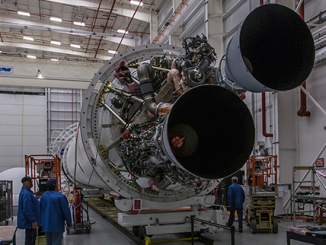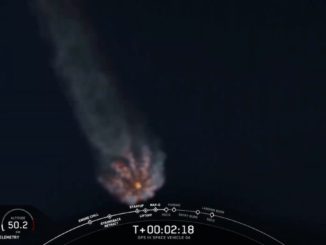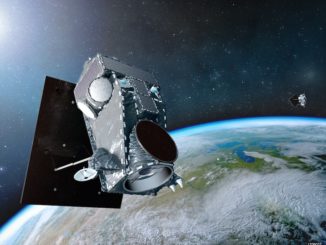EDITOR’S NOTE: Updated after static fire.
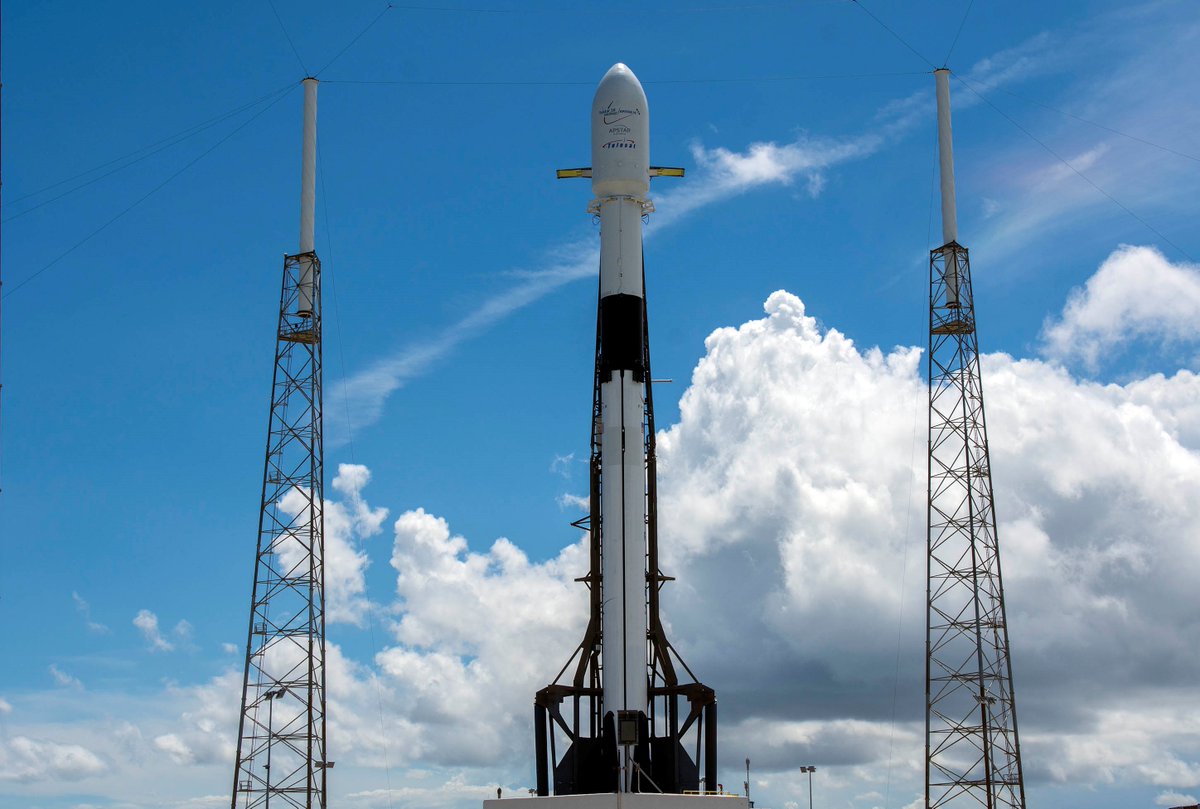
SpaceX ground teams at Cape Canaveral transferred a Falcon 9 rocket to launch pad 40 and rotated the booster vertical Monday for a preflight hold-down firing, ahead of a liftoff scheduled for Wednesday night carrying 60 satellites into orbit for the company’s planned Starlink broadband constellation.
SpaceX confirmed the completion of the static fire test Monday night, setting the stage for liftoff of the Falcon 9 rocket during a 90-minute window opening at 10:30 p.m. EDT Wednesday (0230 GMT Thursday) from Cape Canaveral’s Complex 40 launch pad.
The launch will be the first mission dedicated to SpaceX’s multibillion-dollar Starlink project, which aims to eventually provide Internet connectivity worldwide with a constellation that could eventually number nearly 12,000 satellites.
The hotfire test Monday was a customary milestone in SpaceX’s launch campaigns. The hold-down firing doubled as a checkout of the Falcon 9 rocket and its launch pad, and a countdown rehearsal for SpaceX’s launch team at Cape Canaveral.
The Falcon 9 was filled with super-chilled, densified kerosene and liquid oxygen propellants during a mock countdown, culminating in ignition of the first stage’s nine Merlin 1D main engines for several seconds. Hold-down restraints will keep the Falcon 9 firmly grounded during the engine firing.
The 60 Starlink satellites were already installed on top of the Falcon 9 launcher ahead of the hotfire test, encapsulated inside the rocket’s aerodynamic nose shroud for Wednesday night’s liftoff. Since a Falcon 9 rocket exploded during preparations for a similar hotfire test in September 2016 — an accident that destroyed the launch vehicle and an Israeli-owned commercial communications satellite — SpaceX has conducted the static fire tests without payloads on-board the rocket.
But SpaceX is the launch provider and the customer for Wednesday’s mission.
Elon Musk, SpaceX’s founder and chief executive, revealed the number of satellites scheduled for the first dedicated Starlink launch in a tweet Saturday night. He also tweeted a picture of the 60 spacecraft stacked inside the Falcon 9’s payload fairing.
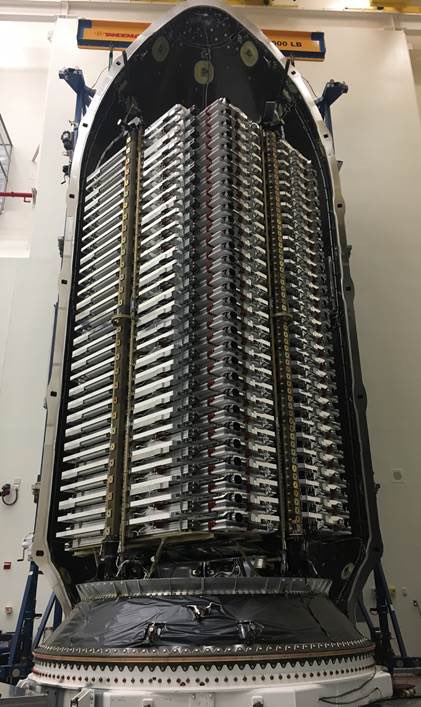
Musk tweeted that the 60 satellites, which are flat-packed atop the rocket, are a “tight fit” inside the Falcon 9’s 17.1-foot-wide (5.2-meter) payload fairing.
He added that the satellites are based on the “production design” SpaceX intends to use for future Starlink spacecraft. SpaceX launched two Starlink demonstration satellites as piggyback payloads on a Falcon 9 launch with a Spanish radar observation satellite in February 2018, but the spacecraft shown stacked in the Falcon 9 fairing for launch this week have a different appearance.
Gwynne Shotwell, SpaceX’s president and chief operating officer, discussed the objectives of the first dedicated Starlink satellite launch at an industry conference last week.
“This next batch of satellites will really be a demonstration set for us to see the deployment scheme and start pulling our network together,” Shotwell said May 7 at the Satellite 2019 conference in Washington. “We start launching satellites for actual services later this year. I wouldn’t be surprised if we had two-to-six (additional) launches at the end of the year (for Starlink.) It largely depends on how we do on this first batch.”
“Much will likely go wrong on (the) first mission,” Musk tweeted. He added that six more launches of 60 satellites are needed for “minor coverage,” and 12 more launches would provide “moderate coverage.”
Musk said more details on the Starlink satellites would be released on the day of the launch.
The Starlink satellites are built and manufactured at a SpaceX facility in Redmond, Washington. SpaceX eventually plans to launch and operate up to 4,400 Ku-band and Ka-band satellites, and a follow-on network of 7,518 additional Starlink satellites transmitting in V-band frequencies.
SpaceX continues raising funding for network, which company officials have previously said could cost $10 billion to develop and deploy. The Starlink satellites are designed to beam broadband signals around the world from orbits hundreds of miles above Earth, creating a global umbrella of high-speed Internet connectivity.
The first group of up to 1,584 Starlink satellites will operate in orbits 341 miles (550 kilometers) above Earth, at an inclination of 53 degrees to the equator.
SpaceX plans to initially deploy roughly 4,400 Starlink satellites broadcasting signals in Ku-band and Ka-band. A follow-on network of 7,518 additional Starlink satellites would transmit in V-band frequencies, according to regulatory filings with the Federal Communications Commission.
While Musk said the 60 Starlink payloads launching this week are production models, unlike the demonstration satellites launched last year, Shotwell said last week that the spacecraft aboard the next Falcon 9 flight lack at least one key system required to make the network function as designed.
“They’re capable, but there are no inter-satellite links on it,” Shotwell said. “I’ll call them test-class satellites, but the antennas are pretty hot on these things. They’re a very capable system.”
The operational Starlink fleet will use laser inter-satellite links to hand off Internet connections around the world without routing the signals through a ground station. The satellites also use electric propulsion for in-orbit maneuvers.
Follow Stephen Clark on Twitter: @StephenClark1.

